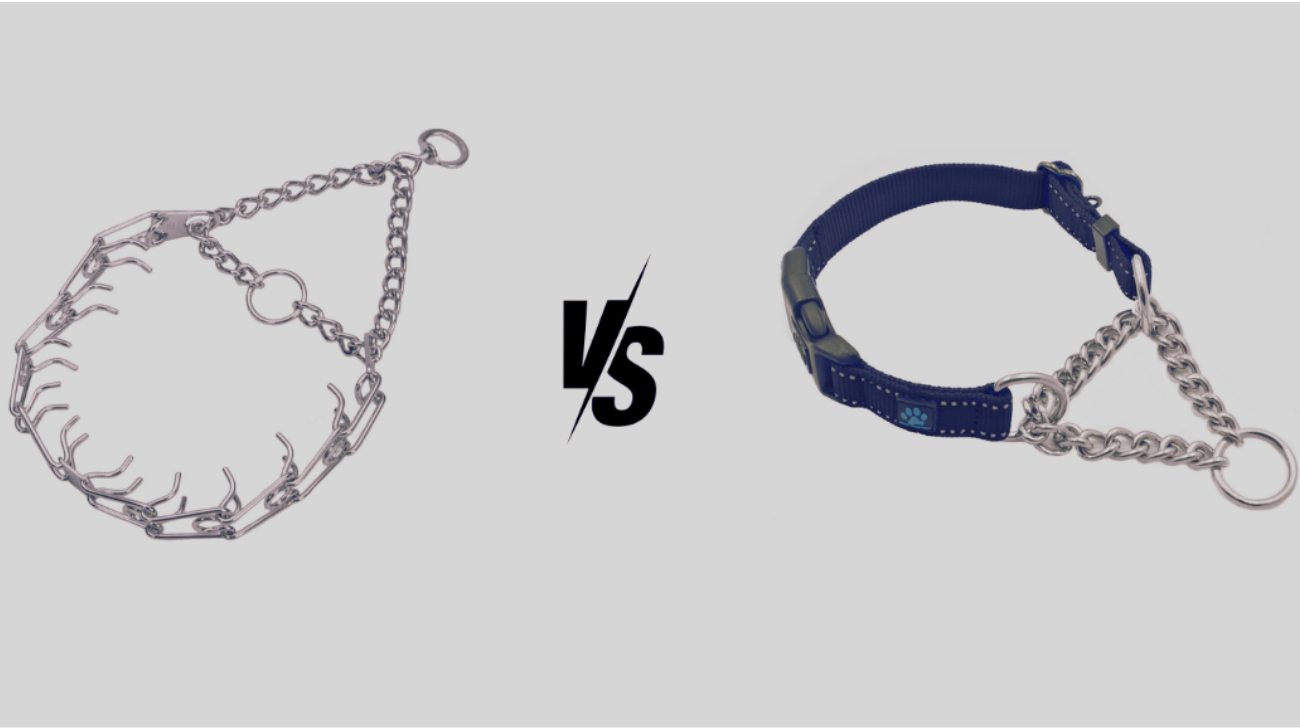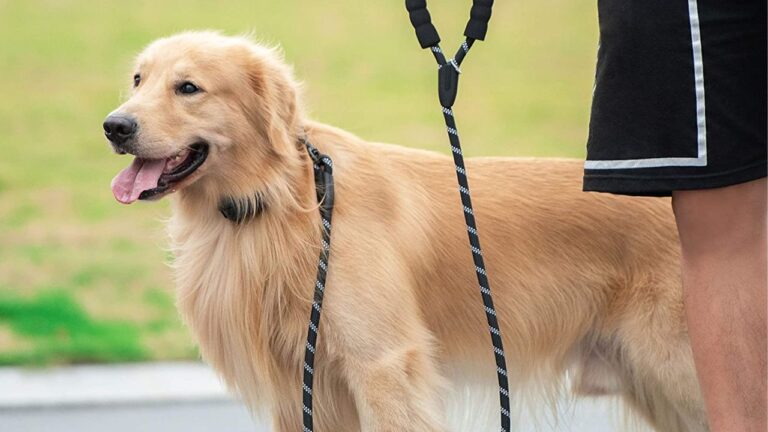Dog training can be a complex process, particularly when managing behaviors like pulling, lunging, or excessive barking. The right collar plays a crucial role in making training sessions more effective and helping both dog and handler communicate better. Two popular collar options for behavior correction are the prong collar vs martingale collar.
Both collars serve different purposes and cater to distinct training needs, with the prong collar often used for more stubborn or strong dogs, and the martingale collar being a safer, gentler option for dogs with certain behavioral issues. Understanding the differences between these tools will help you select the best one for your dog’s specific requirements.
In this guide, I’ll delve into the features, benefits, and potential drawbacks of each collar type. You’ll also find helpful tips on using them effectively and safely, ensuring that your dog is comfortable throughout the training process. For insights on whether Pomeranians should wear a collar, including considerations for safety and alternatives, check out this informative article.
| My Personal Opinion In my experience, I find that martingale collars are excellent for dogs that are prone to slipping out of regular collars, and they’re especially beneficial for breeds with narrower heads, like Greyhounds. They offer a humane, gentle solution for mild-mannered dogs and can be used safely for everyday training. On the other hand, prong collars are more effective for large, strong dogs with ingrained behavioral issues, but they require a higher level of expertise to use correctly. |
Blog Highlights
ToggleWhat Is a Prong Collar?
A prong collar, sometimes known as a pinch collar, is a metal training collar designed with interlocking metal prongs that face inward. When a dog pulls on the leash or exhibits undesirable behavior, the prongs gently pinch the dog’s neck, mimicking the natural corrective actions that a mother dog might use on her puppies.
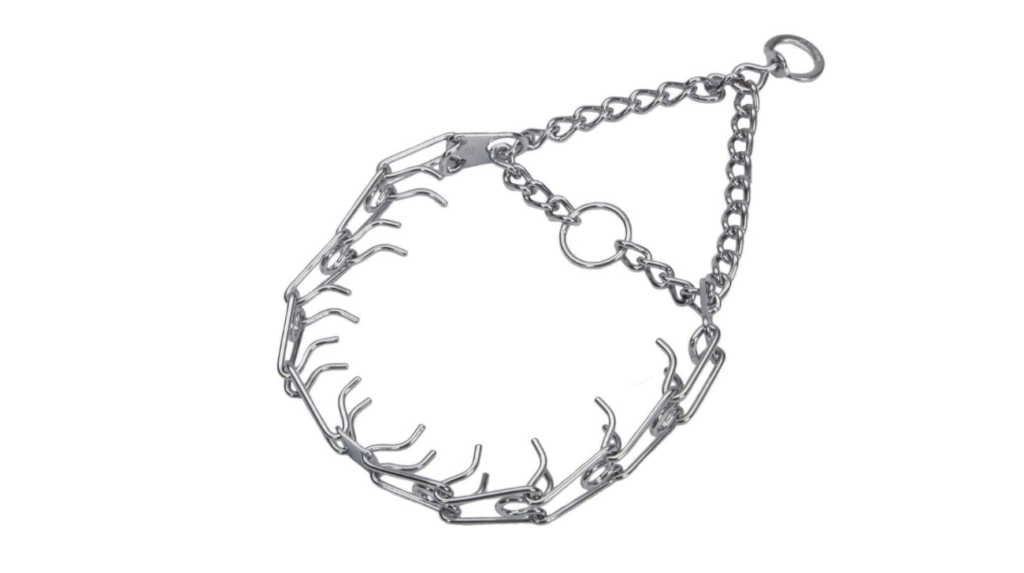
The goal is to apply corrective pressure to discourage undesirable behaviors and reinforce commands. For a comprehensive guide on what kind of harness is best for a Pomeranian, including comfort and safety tips, check out this article.
Key Features of the Prong Collar:
- Inward-Facing Prongs: These prongs are designed to apply even pressure around the neck, providing a corrective feedback mechanism.
- Adjustable Fit: Prong collars are customizable, with links that can be added or removed to fit your dog’s neck size comfortably.
- Safety Mechanism: The pressure applied by the prongs is more evenly distributed, reducing the risk of choking compared to traditional collars.
Benefits of the Prong Collar:
- Effective for Strong Pullers: Prong collars are highly effective for large, powerful dogs that are difficult to control with regular collars or harnesses.
- Even Pressure Distribution: The prongs evenly distribute pressure, minimizing discomfort or injury when used correctly.
- Clear Feedback for Training: The immediate, sharp feedback provided by the prongs helps dogs understand the correction more quickly.
- Durability: Constructed from strong, high-quality metal, prong collars are designed to last even with frequent use.
Limitations of the Prong Collar:
- Requires Proper Handling: Misuse, such as excessive pulling or improper fitting, can cause discomfort, pain, or injury.
- Not Suitable for All Dogs: Prong collars are not ideal for puppies, small dogs, or dogs with neck or respiratory issues.
- Negative Perception: Some people view prong collars as inhumane due to their corrective nature, though they are widely accepted by experienced trainers when used correctly.
When to Use a Prong Collar:
- For large, strong dogs that pull excessively on the leash or exhibit aggressive behaviors.
- When training a dog with ingrained behavioral problems that require firm corrections.
- If you have prior experience with training tools or access to professional training guidance.
What Is a Martingale Collar?
A martingale collar is a type of training collar designed with a unique, adjustable loop mechanism that prevents the collar from slipping off the dog’s neck. This type of collar is especially beneficial for dogs with narrower heads, such as Greyhounds, Whippets, or other sighthounds, that may slip out of traditional collars.
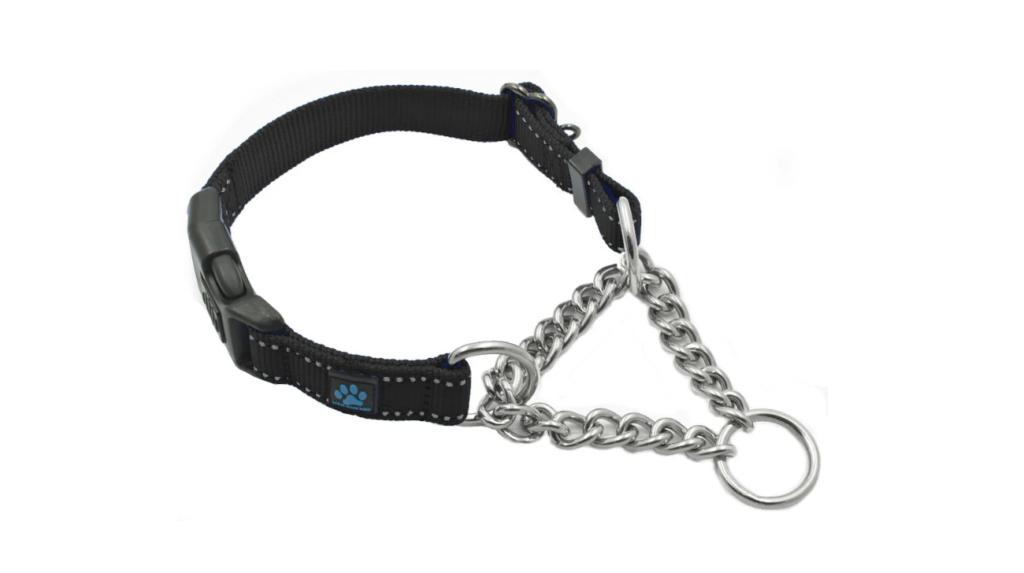
The martingale collar tightens slightly when the dog pulls, but it does not constrict the neck as harshly as a choke chain. Discover if the American Eskimo is a guard dog and learn about its suitability for protecting your home.
Key Features of the Martingale Collar:
- Adjustable Loop: Martingale collars consist of two loops: one that fits around the dog’s neck and another smaller loop that tightens when tension is applied.
- Non-Slip Design: Unlike traditional collars, which can slip over a dog’s head, the martingale collar ensures that it stays in place, even during high-energy activities.
- Soft Materials: Typically made from nylon, cotton, or fabric, martingale collars are gentle on the dog’s skin, making them a safer choice for daily wear.
Benefits of the Martingale Collar:
- Safety for Escape-Prone Dogs: Perfect for dogs that are prone to slipping out of regular collars, such as sighthounds or dogs with narrow necks.
- Gentle, Non-Harmful Pressure: Unlike choke chains or prong collars, martingale collars apply gentle pressure to the neck, making them safer for long-term use.
- Versatile and Comfortable: Suitable for both training and regular walks, martingale collars are generally more comfortable for most dogs compared to prong collars or choke chains.
- Suitable for All Dogs: Martingales can be used on dogs of all sizes and are especially effective for breeds with head shapes that make traditional collars less secure.
Limitations of the Martingale Collar:
- Less Control for Strong Pullers: While martingale collars help prevent slipping, they may not be as effective for dogs that need stronger corrections for pulling or stubborn behaviors.
- Not Ideal for Aggressive Dogs: The martingale collar does not provide the same level of correction as a prong collar, making it less effective for dogs with severe behavior issues.
- No Immediate Feedback: Unlike prong collars, martingale collars don’t provide the immediate, sharp feedback that some dogs need for behavior correction.
When to Use a Martingale Collar:
- For dogs with narrow heads or escape-prone breeds that tend to slip out of traditional collars.
- For training dogs with mild to moderate pulling tendencies.
- When you want a safe, non-restrictive collar for daily walks and non-aggressive dogs.
- For dogs that respond better to gentle guidance rather than harsh corrections.
Comparing Prong Collar vs Martingale Collar: Key Differences
Both prong collar vs martingale collar have unique features and advantages depending on the dog’s behavior and training needs. Here’s a breakdown of how they compare in various categories:
Detailed Differences Between Prong Collar vs Martingale Collar
Let’s take a closer look at the key differences between the prong collar and martingale collar in terms of design, control, comfort, safety, and training effectiveness. Learn about the size collar for an American Eskimo to ensure a perfect fit and comfort for your dog.

1. Design and Structure
- Prong Collar: The prong collar is composed of metal links with inward-facing prongs that gently pinch the dog’s neck when tension is applied. It mimics the natural corrections used by a mother dog, offering immediate feedback to discourage unwanted behavior.
- Martingale Collar: The martingale collar has a loop design with two rings: a larger loop that fits around the dog’s neck and a smaller loop that tightens when the dog pulls. The tightening is controlled and does not constrict the neck like a choke chain.
Key Difference: Prong collars apply pressure in a more controlled manner and offer firmer corrections, while martingale collars provide a gentler, non-restrictive solution for dogs that need less intensive behavior correction.
2. Control and Effectiveness
- Prong Collar: Ideal for strong dogs or those that pull excessively, the prong collar provides firm, consistent corrections. The pressure applied to the neck is immediate and clear, allowing for fast, effective training.
- Martingale Collar: The martingale collar is more suitable for dogs that pull moderately. It helps prevent escape, but it doesn’t provide as much control as a prong collar. The tightening action is gentle and doesn’t offer the same intensity of feedback.
Key Difference: Prong collars are more effective for strong pullers and aggressive dogs, whereas martingale collars are better suited for dogs with less intense pulling tendencies.
3. Comfort and Safety
- Prong Collar: The prong collar is comfortable when fitted properly, but improper use or fit can cause discomfort or even injury. When used responsibly, it is safer than choke chains.
- Martingale Collar: Martingale collars are gentle and offer consistent, even pressure around the neck. They are a safer choice for everyday use and do not cause choking or injury when used appropriately.
Key Difference: Martingale collars are generally safer and more comfortable for all dogs, particularly those with mild behavior issues. Discover why Afghan Hound collars are wide by exploring the unique characteristics of this breed and how wide collars enhance their comfort and style.
4. Training Effectiveness
- Prong Collar: The prong collar is highly effective for dogs with ingrained behavioral issues such as excessive pulling or aggression. It provides immediate, clear feedback and is ideal for training strong or stubborn dogs.
- Martingale Collar: The martingale collar is more effective for dogs that need mild guidance and behavior correction. While it can prevent escape and reduce pulling, it doesn’t offer the same precision and firm feedback as a prong collar.
Key Difference: The prong collar is ideal for advanced training and dogs with serious behavior issues, while the martingale collar is suitable for basic training and dogs that respond well to gentle guidance.
5. Suitability for Different Dogs
- Prong Collar: Best for large, strong, or stubborn dogs that require firm corrections. It is also useful for dogs with ingrained behavioral issues.
- Martingale Collar: Ideal for small to medium-sized dogs, puppies, and breeds with narrow heads that tend to slip out of regular collars. It is also a great option for dogs that are generally well-behaved but need some correction.
Key Difference: Prong collars are better suited for larger, stronger dogs, while martingale collars cater to a wider range of breeds, including those with unique physical characteristics like narrow heads. Find out what style dog collar is best for hounds to ensure comfort and safety for your furry friend.
Using the Tools Safely: Essential Tips
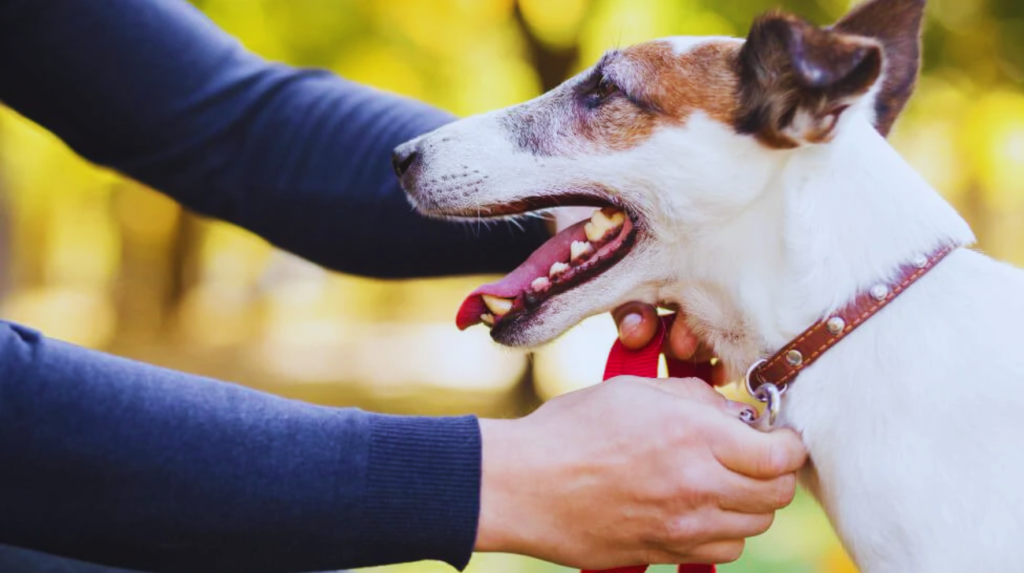
How to Fit a Prong Collar:
- Choose the right size for your dog’s neck and make sure the collar fits snugly but comfortably.
- Place the collar high on the neck, just behind the ears, to ensure even pressure distribution.
- Regularly check the fit and adjust the prongs as necessary.
- Avoid using the prong collar for prolonged periods. Use it only during training sessions.
How to Fit a Martingale Collar:
- Ensure the collar fits snugly but not too tight. It should slip over your dog’s head easily.
- Position the collar high on the neck, near the ears, for maximum control.
- Avoid making the collar too tight, as it should only tighten slightly when pulling occurs.
Safety Considerations:
- Both collars should be used with care and attention to ensure they do not cause discomfort or injury.
- Pair both tools with positive reinforcement techniques, such as treats and praise, to encourage good behavior.
- Always consult with a professional trainer if you’re unsure how to use either tool properly.
Wrapping Up
Choosing between prong collar vs martingale collar ultimately depends on your dog’s temperament, behavior, and training needs. Prong collars offer precise control and are highly effective for strong or stubborn dogs, while martingale collars provide a gentler and safer option for dogs with mild behavior issues or those prone to slipping out of their collars.
The ideal size collar for English Springer Spaniel typically ranges from 14 to 20 inches, depending on the dog’s age and neck size, ensuring a comfortable and secure fit.
Regardless of which collar you choose, proper fitting, responsible handling, and positive reinforcement are essential for successful training. Consult with a certified dog trainer if you need guidance on choosing the best tool for your dog’s needs. With patience and the right approach, you’ll foster a stronger bond and help your dog develop good manners and behavior.

